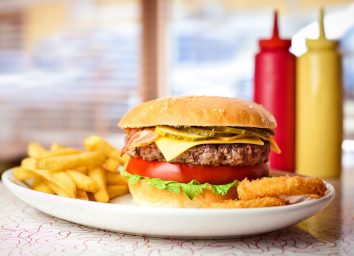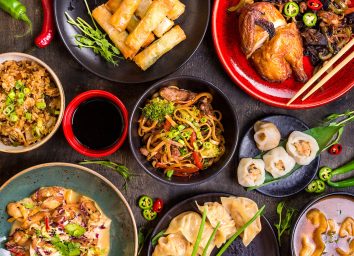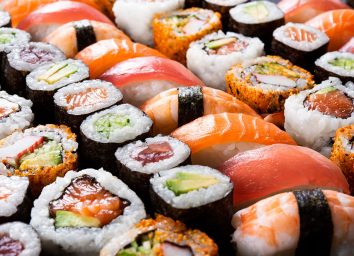The Single Worst Dish You Should Never Order at a Thai Restaurant
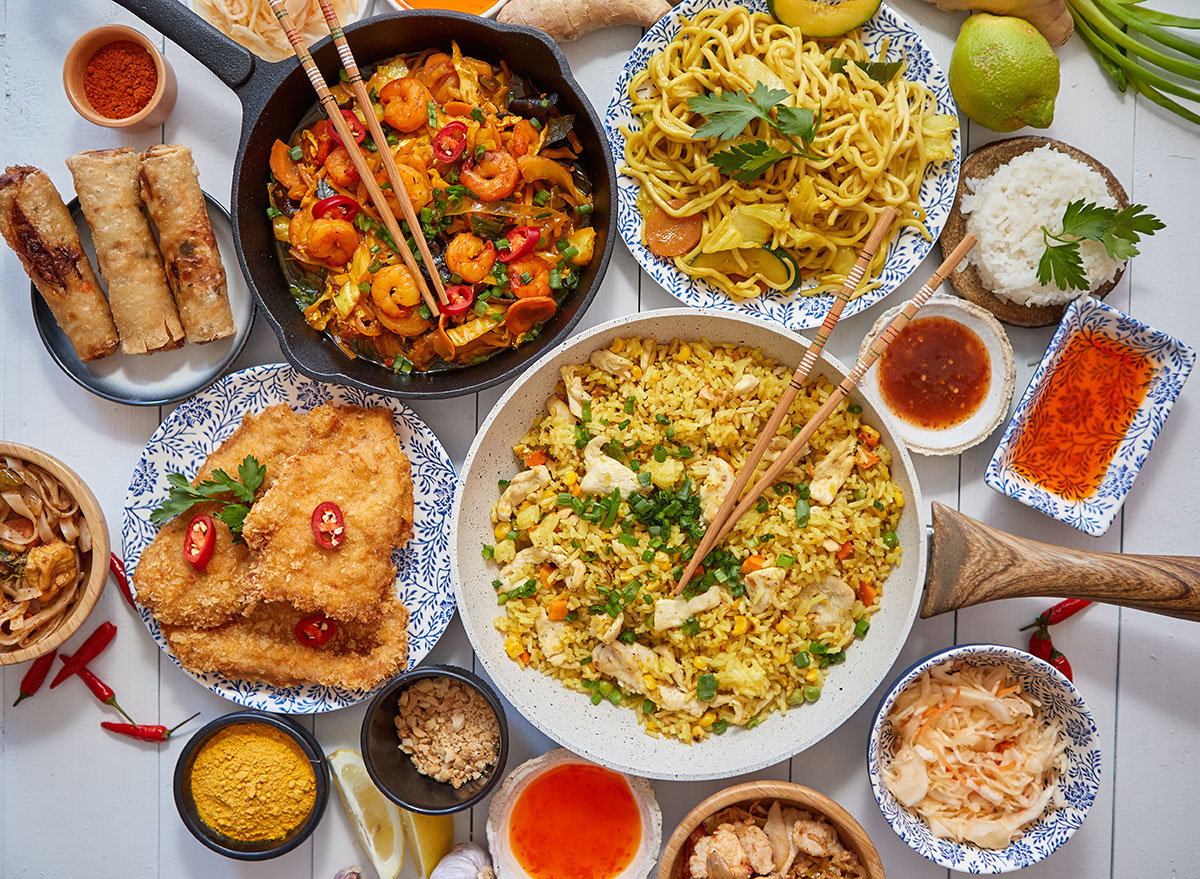
Thai food can taste great whether you're looking to dine out at a restaurant, or you're simply ordering in dinner while you're on the couch with some Netflix and a blanket after a long day. The delicious sauces, hearty noodles, and salty protein and veggie-based dishes make it the ultimate comfort food.
Yet, when you dine at a Thai restaurant or order in and get that takeout box, you'll notice the portions are pretty large and there's sauce at the bottom of the container, as the food itself is practically swimming in it! Like anything else, there are some dishes that are better for you than others, and there's even one meal option that is truly just unhealthy for you no matter how you spin it.
Despite how delicious every item on the menu might be, there are some dishes that are worse than others. Not sure which one you should avoid? Well, the worst dish you can get when out at a Thai restaurant is…
Chicken Pad Thai
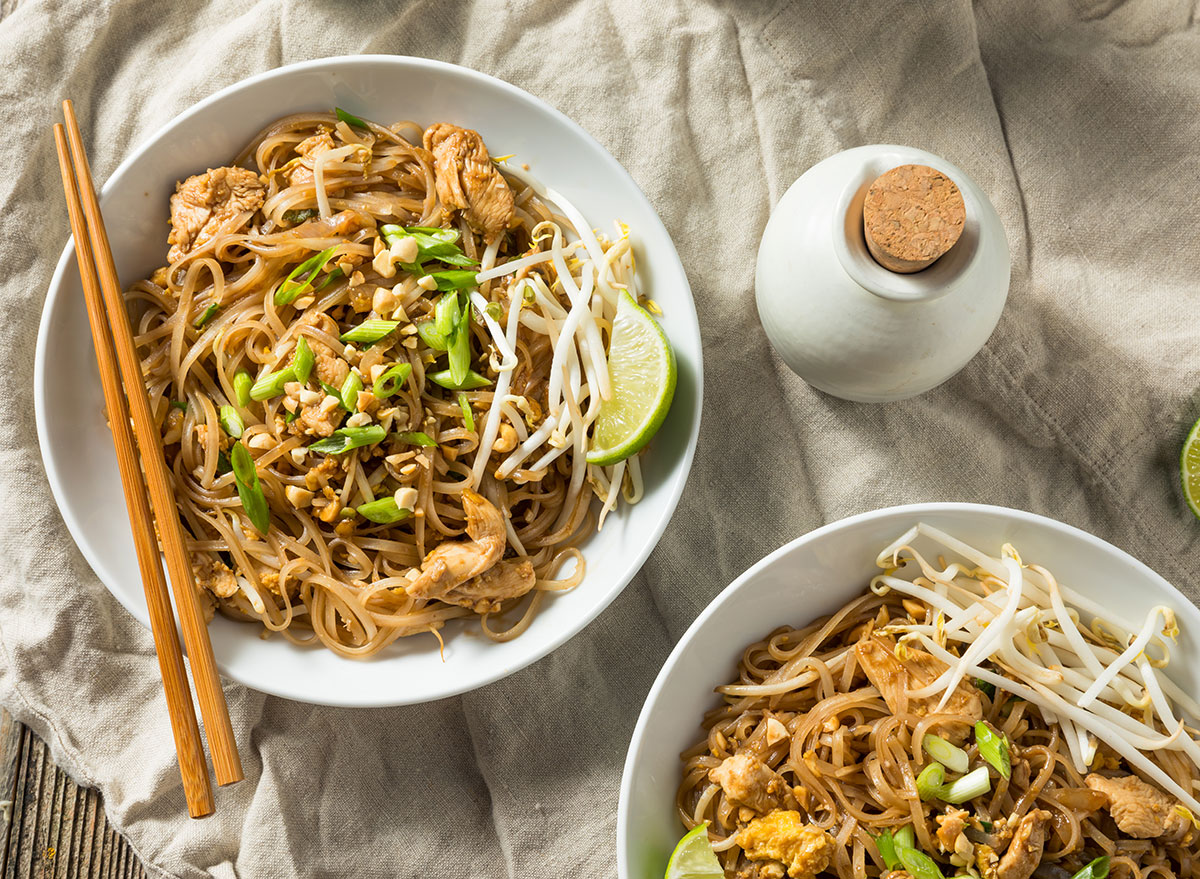
Bad news for everyone—as it's a personal favorite and go-to order for so many!—but Chicken Pad Thai is just a diet disaster.
"Chicken Pad Thai is one of the worst dishes you can order at a Thai restaurant. The portion size is always extra large and consists mostly of noodles fried in oil," says Lauren Harris-Pincus, MS, RDN, and author of The Protein-Packed Breakfast Club.
Some oils can be good for you, like olive oil or avocado oil, which have healthy fats, but the oils used here are not—and you're using too much of it to get that crisp, fried texture. Thai cooks commonly use coconut oil, palm oil, peanut oil, or soybean oil, and while coconut oil can have some benefits, it is high in saturated fat, which can be bad for your heart if used in excess.
"Plus the sauce is loaded in sugar—upwards of two day's worth according to the American Heart Association guidelines. The sodium content surpasses the amount recommended in an entire day and it has as many carbs as 12 slices of bread, too," Harris-Pincus says. Yikes!
Here's a great example that Harris-Pincus pulled to give you an idea. PF Chang's Chicken Pad Thai has 1,230 calories, 33 grams of fat, 6 grams sat fat, 2,590 milligrams of sodium, 181 grams of carbohydrate, 43 grams sugar, and 54 grams protein per serving. That's just for that one entrée—you are likely getting some apps to go with it and maybe dessert or a cocktail, too. (If you're looking for more helpful tips, your ultimate restaurant and supermarket survival guide is here!)
What's the best dish to order at a Thai restaurant instead?
You should go with a nice stir-fry that offers a protein and veggies that is made in a simple cooking technique, such as steamed, rather than fried.
"The best item to order at PF Chang's is the Buddha Feast (either stir fry or steamed) made with five-spice tofu, savory sauce, asparagus, shiitakes, broccoli, carrots," Harris-Pincus says.
You could, of course, swap in tofu instead of having animal protein, too.
"For a vegetarian meal, it's respectable in plant-based protein with the equivalent of 4 ounces of meat, chicken or fish," Harris-Pincus says. You just want to make sure that is steamed too, or at least sautéed (not fried) and with light sauce or sauce served on the side so you can then add it yourself.
"If you want to save on the sodium and sugar, ask for [this dish] steamed with the stir fry sauce on the side and drizzle on your own," Harris-Pincus suggests. This is an easy way to keep sodium, calories, and sugar in check.
Plus, if you go with a steamed protein and veggie-based dish, you're getting antioxidants and fiber, a major benefit of this meal, Harris-Pincus says. This particular dish is low-calorie, too.
"Overall, it's a fraction of the calories of other dishes," she says. So, enjoy and next time you're in the mood for Thai food, you'll know what to do to make the best choice!
